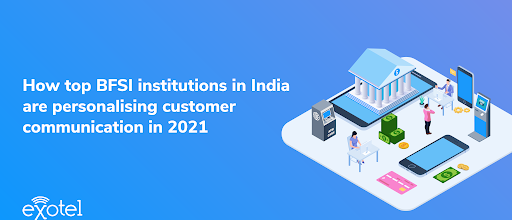Is your business leveraging the latest trends in customer communication? In today’s digital world, the way people communicate, and the channels that they prefer keep changing continuously. Thus, it is important to stay abreast of these changes so that you can leverage them instead of sticking with older, outdated processes. At Exotel, we are continuously working towards serving the evolving needs of our customers and keep a close watch on communication trends in the market. According to our research, here are six trends in customer communication that we think will unfold in 2021:
1. IP Messaging will become the “email” of emerging markets

With the advent of instant messaging platforms like WhatsApp, consumers have grown used to the ease of use and instant nature of IP messaging. As a result of this, consumers now prefer the same channel for business communication as well. This combined with the fact that IP messaging is economical for businesses has led to an increase in the use of IP messaging for customer communication.
In the coming years, we can expect localisation, chatbots, and location-based intelligence to drive adoption. As mobiles evolve to accommodate local language input and literacy rates go up, IP messaging for business communication will become more prevalent in emerging markets. Most email conversations will shift to IP messaging.
2. Voice AI will continue to advance and become better

AI has been penetrating all kinds of businesses in some way or the other. In the customer communication landscape, we’ve been seeing a wide range of applications, from chatbots and emotion detection to predictive dialling. More and more data is being mined from customer calls and speech to text conversion is playing a big role in making that happen. This will continue to advance and become better.
As voice AI advances, we could see applications like voice fingerprinting shoot up in the coming years. However, in a country like India, multiple languages and accents become a challenge for adoption. Hence, voice AI adoption in customer communication can be muted over the next couple of years until it is intelligent enough and cheaper than an agent.
3. Unified communication will be the way forward

Seamless customer experience and personalisation are becoming the norm instead of being a differentiator, as was the case a couple of years ago. Since sales, support, and other customer-facing teams speak to customers day-in and day-out, their interactions form a majority of what constitutes CX.
Hence, businesses are working towards helping their agents deliver personalised & better communication. One of the biggest ways in which this is happening is via unified communication (UC). It eliminates context-switching and allows agents to work effectively by creating an easily-accessible, single source of truth. We expect this trend to continue in the coming years.
In addition to helping agents communicate better, cloud communication providers are also changing the way they’re positioned. Contact centre offerings will continue to evolve into customer experience and engagement management offerings. Cloud communication companies will strive to support all channels – voice, SMS, video, chat, etc, to make it easier to build a single source of truth for customers.
4. Cloud migration will be on the rise

2020 has already brought about a huge migration to the cloud. To enable remote work during the pandemic, many businesses across all sectors moved to the cloud. Desk phones are continuously being replaced by click-to-call and mobile apps to enable mobility. As more and more businesses realize the ease of use and the many benefits that cloud brings about, the adoption of cloud will only continue to increase in the coming years.
5. Video will play a larger role in contact centre communication

The way businesses communicate with customers is changing. Owing to better connectivity and affordable access to the internet, video is gaining popularity. Taking this into account, some businesses have started integrating video into their contact centres. This is especially useful for things like video KYC, fixing common home devices or appliances, etc.
Video is more direct and personal – it’s a great way to offer personalised communication and make a lasting impact on your customers. This is especially true now since there are few businesses leveraging video at this point. The adoption of video chat for customer communication will rise slowly but surely in the coming years.
6. Integrations will thrive in emerging markets

Keeping in line with the trend we foresee for unified communications, integrations will thrive. This is because integrations are one of the biggest enablers of unified communication. More and more businesses are realising the importance of having an integrated set of business tools that talk to each other. This ensures that customer data is not lost in translation between the various touchpoints.
CRM, Helpdesk, and cloud telephony will continue to integrate and form a single interface. Dashboards and CRMs will proliferate and remain verticalised – for example, real estate communication dashboard will be different from what banking uses. Customizable UI components and APIs will play a big role in enabling the same.
Conclusion
At Exotel, we are committed to providing our customers with the best tools for effective business communication. We’re also excited about what the upcoming year has in store, and will continue to evolve our offerings to serve our customers better What do you think are the trends that will catch on in 2021? Let us know by commenting below!




 +65-6951-5460
+65-6951-5460 +91-8088919888
+91-8088919888 +1-(718) 354-8866
+1-(718) 354-8866 +62-215-098-4960
+62-215-098-4960 +60-3-2771-2799
+60-3-2771-2799 +61-2-8073-0559
+61-2-8073-0559
No Comments